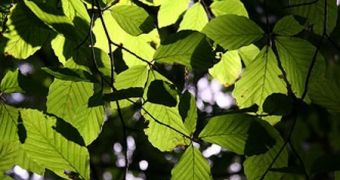A novel type of the important plant pigment chlorophyll has been recently identified. The finding could lead to the development of new methods to produce biofuels more efficiently.
Until now, the chemical was known to be sensitive to only a certain portion of the electromagnetic spectrum, but the new discovery extends that range all the way to the red end of that spectrum.
According to the team that made the finding, the discovery could be used to engineer algae capable of producing biofuels when exposed to multiple types of light.
Plants employ chlorophyll to harness the power of sunlight. This helps them transform carbon dioxide (CO2) and nutrients taken from the soil into oxygen and energy.
The efficiency of this entire process, called photosynthesis, depends entirely on the type and intensity of sunlight the plant is exposed to.
If a type of plant can make good use of a wider portion of the light spectrum, than it naturally produces a lot more energy, which in turn allows it to grow faster.
“This is a very important new development, and is the first new type of chlorophyll discovered in an oxygenic organism in 60 years,” explains Washington University in St. Louis (WUSL) biological chemist Robert Blankenship, who was a researcher on the new study.
The new light-sensitive pigment has dubbed chlorophyll f, and researchers say that it reaches peak performance when exposed to light with a wavelength of exactly 706 nanometers.
This means that the point is located just beyond the red end of the visible light spectrum. Details of the discovery appear in the August 19 issue of the esteemed journal Science.
“In nature this very small modification of the pigment happens, and then the organism can use this unique light,” expert Min Chen explains of how new types of chlorophyll appear.
He is a molecular biologist at the University of Sydney in Australia, Science News reports. The expert and his team found the pigment in formations known as stromatolites.
There are chunks of material featuring both rock and algae, which can generally be encountered in shallow waters. The samples used in this particular investigation were collected from the Hamelin pool, in the Shark Bay of western Australia.
The research team believes that microorganisms known as filamentous cyanobacterium are responsible for the production of chlorophyll f in stromatolites.
“This challenges our conception of the limit of oxygenic photosynthesis,” Chen concludes.

 14 DAY TRIAL //
14 DAY TRIAL //